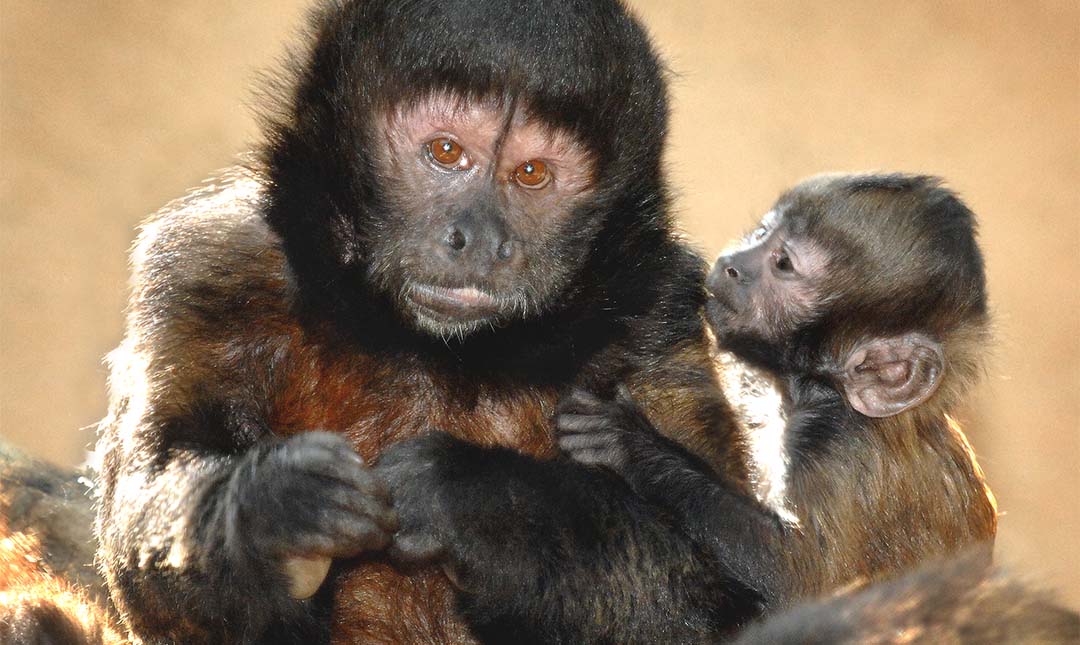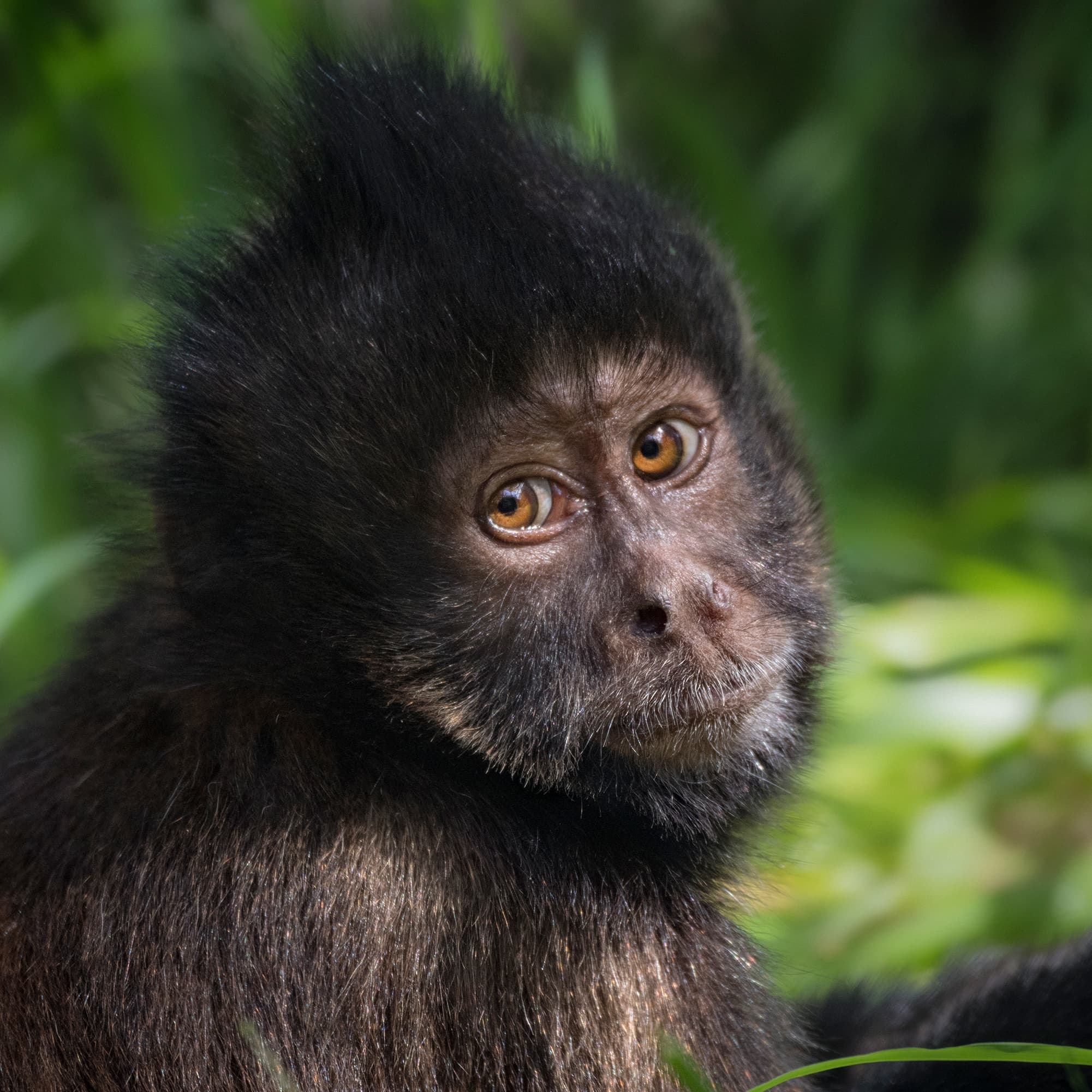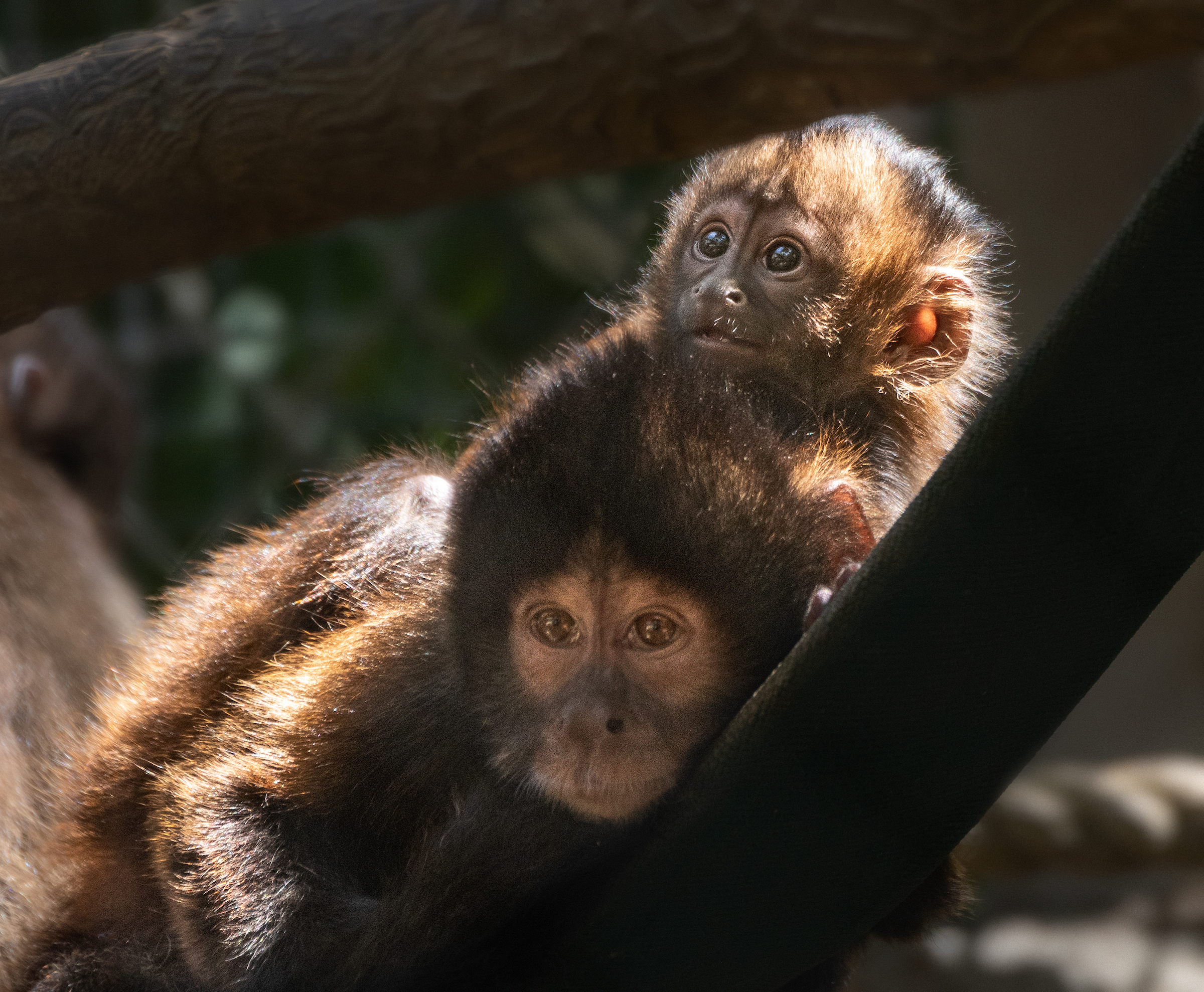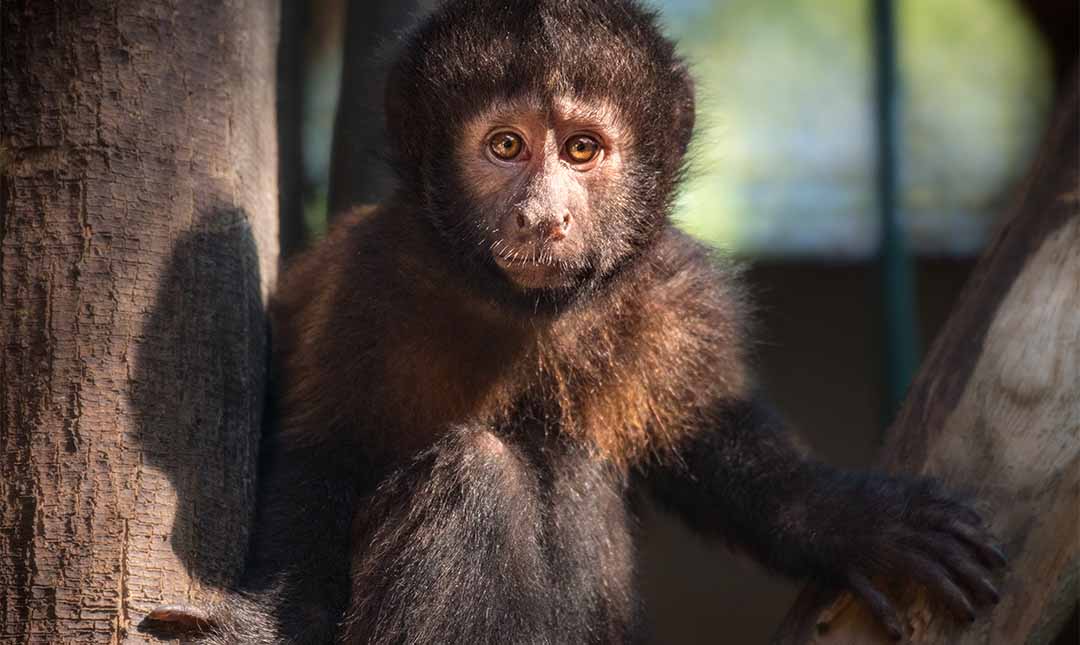About
Crested capuchins are highly intelligent monkeys. They are adept at manipulating objects, using their nimble fingers to manipulate tools such as rocks to crack open nuts and small branches to fish for termites or, in the case of the large-headed capuchin, dig up caiman eggs. They will also dip their cupped hands into the water to drink, squeeze fruits for juice, and rub selected plants with insect-repellent properties over their bodies.
Crested capuchins live in groups of eight to ten males and females led by an alpha male. They are active during the day, often foraging through the trees, but do take time for a midday nap! This monkey’s tail is semi-prehensile, meaning it can be used to help hang onto branches, but because it is covered with fur, it cannot support the monkey’s full body weight so they cannot hang by their tails. Capuchin monkeys were given their common name for their resemblance to a religious order of Franciscan monks—the dark patch of hair on the crown on the monkey’s head resembles the cowl or hood of the monk’s robe. Crested capuchins are endangered in the wild due primarily to the destruction of forests for agricultural crops.
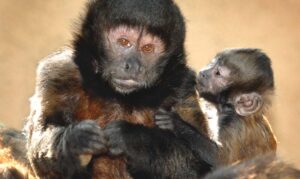
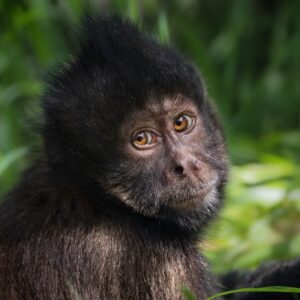

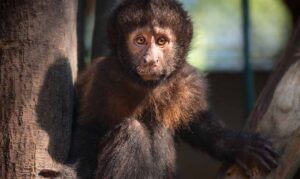
Habitat
Crested capuchin monkeys live in dry, semi-deciduous forests on the Atlantic coast of Brazil.
Diet
These monkeys are omnivorous. They eat fruit, seeds, spiders, crabs, frogs, young birds, and small mammals, supplemented by stems, flowers, and leaves. They also eat eggs and will raid birds’ nests.
Physical Characteristics
An adult capuchin’s body length is 16 to 22 inches plus a 17-inch-long tail. Weight ranges from three to 11 pounds. A capuchin’s lifespan in the wild is 15 to 25 years; in human care it can be more than 40 years.
LOCATION WITHIN THE ZOO
You’ll find this animal in the South America section. See Zoo Map.


